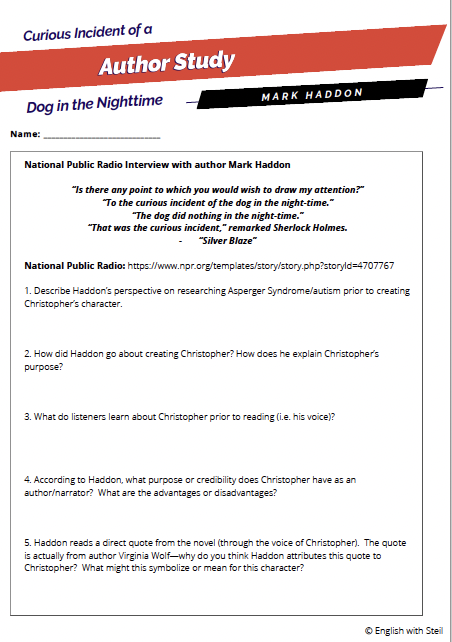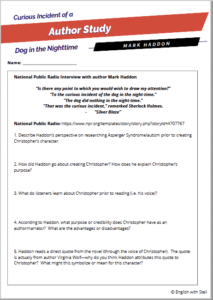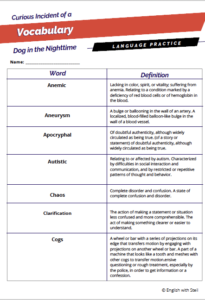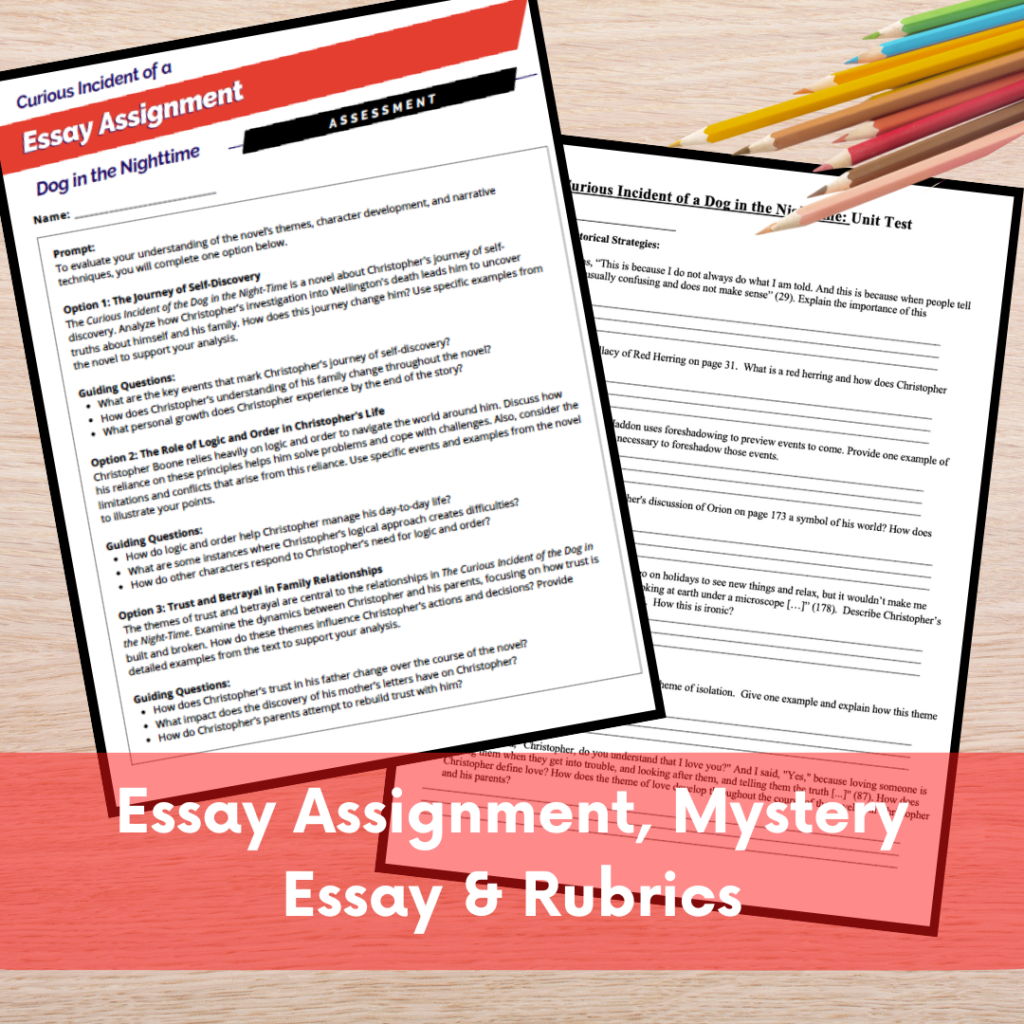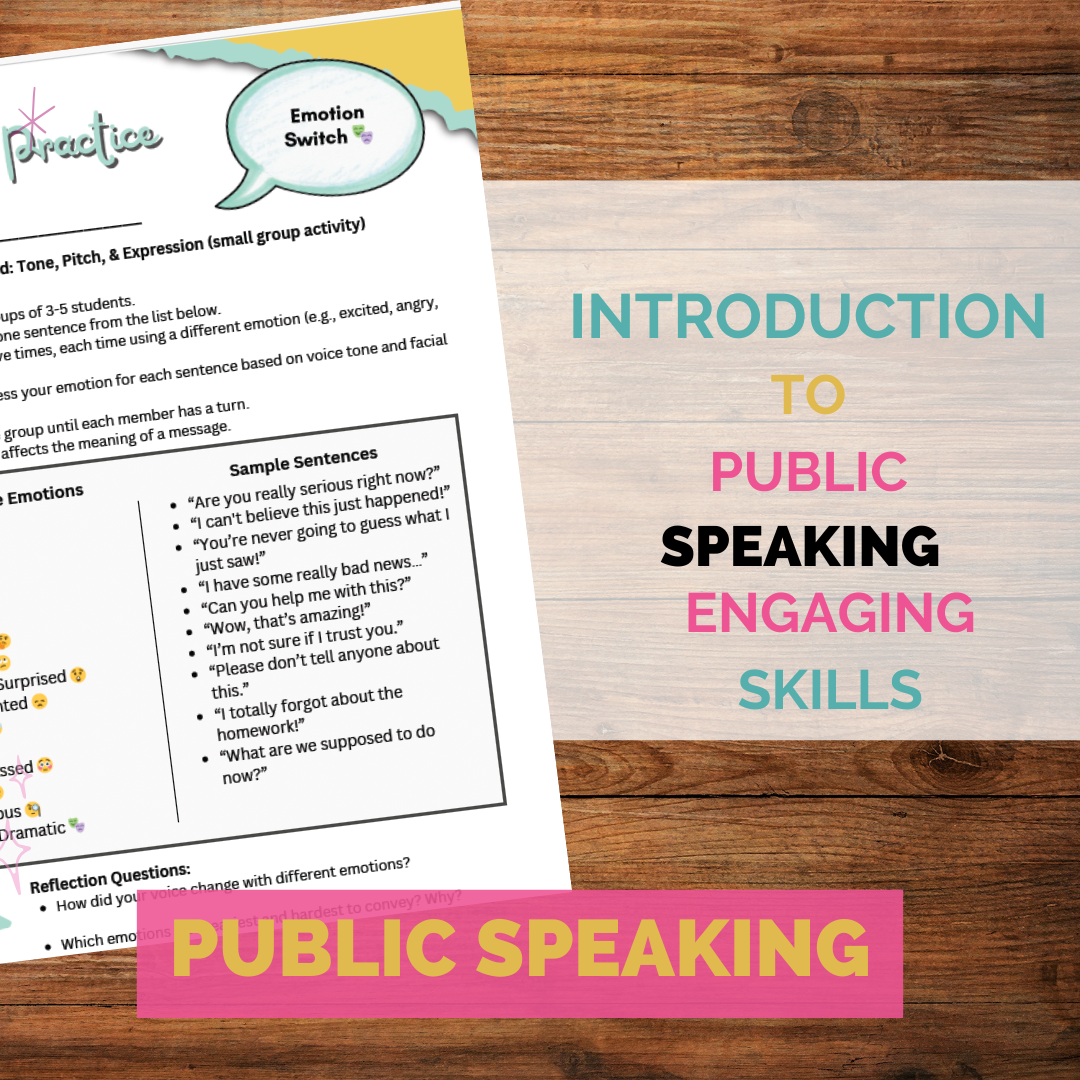Hey there, fellow teachers! If you’re looking for a novel that’s both intriguing and rich with educational potential, “The Curious Incident of the Dog in the Night-Time” by Mark Haddon should be at the top of your list. I’ve had the pleasure of teaching this book, and it’s an absolute gem for engaging students in a multitude of ways. Let’s dive into why you should teach this novel, the themes that emerge, and some creative ideas to bring it to life in your classroom.
Engaging students is a perennial challenge for educators. With the rise of digital distractions and decreasing attention spans, traditional methods often fall flat. However, literature, especially contemporary, relatable pieces, offers an unparalleled medium to captivate young minds. One such work is Mark Haddon’s acclaimed novel, “The Curious Incident of the Dog in the Night-Time.” Let’s delve into how this unique narrative can be a game-changer for classroom engagement.
Why Teach “The Curious Incident of the Dog in the Night-Time”?
First off, this novel offers a unique narrative perspective that can be incredibly eye-opening for students. The story is told from the viewpoint of Christopher Boone, a 15-year-old boy with autism, as he tries to solve the mystery of a neighborhood dog’s death. Here’s why it’s a fantastic choice:
- Empathy and Understanding: The book provides a window into the mind of someone with autism, promoting empathy and understanding among students.
- Critical Thinking: It’s a mystery novel, which naturally gets students thinking critically and honing their problem-solving skills.
- Literary Techniques: The novel uses various literary techniques, such as unreliable narration and non-linear storytelling, which are great for literary analysis.
Unraveling “The Curious Incident of the Dog in the Night-Time”:
At its core, Haddon’s novel is a murder mystery. However, it’s not your standard detective story. The protagonist, Christopher John Francis Boone, is a 15-year-old with autism. He finds his neighbor’s dog murdered and decides to investigate. Through his perspective, readers gain a window into the world of autism, exploring themes of family, trust, and personal growth.
Strategies to Engage Students with the Novel:
Discuss Unconventional Narration:
- Christopher’s unique perspective challenges typical narrative norms. This presents an excellent opportunity to discuss the importance and impact of the narrative voice.
- Pose questions like: How does Christopher’s condition shape the story? How might the narrative differ from another character’s perspective?
Dive into the Mystery:
- The central mystery of the novel can be leveraged to keep students engaged. Consider pausing at critical junctures and encouraging students to play detective. What are their theories? Who are the potential suspects?
Explore Mathematical & Logical Puzzles:
- Christopher loves math, and the book is sprinkled with intriguing problems and puzzles. Use these as a bridge to integrate interdisciplinary learning. Solve the puzzles in class, discuss Christopher’s love for logic, and delve into the soothing nature of systematic problems for some individuals with autism.
Dramatic Readings & Role Play:
- Assign roles to students and conduct dramatic readings of certain sections. This can help students understand characters better and make the story come alive in the classroom.
Empathy Building Activities:
- The novel offers an intimate look into the life and challenges of someone with autism. Organize activities or discussions centered on empathy, understanding, and inclusion. How do society and individuals treat those who are different?
Visual Stimuli:
- Given that the novel was later adapted into a successful stage play, consider showing snippets of its performances. Discuss the translation of literature to drama and how visual elements further our understanding of the story.
Creative Assignments:
- Encourage students to write from the perspective of another character from the book or craft their own detective story featuring an unconventional protagonist. This fosters both empathy and creativity.
Key Themes in the novel
1. Logic and Order
Christopher’s world revolves around logic and patterns, providing him with a sense of control. The novel highlights how logic can serve as both a strength and a limitation, shaping how he navigates relationships and challenges.
2. Communication and Understanding
The story explores the difficulties of communication, particularly between Christopher and those around him. His struggle to interpret emotions and social cues underscores the importance of patience and understanding in human relationships.
3. Family and Trust
Family dynamics play a central role in the novel, with themes of betrayal, forgiveness, and reconnection. Christopher’s relationships with his parents reveal the complexities of trust and the resilience of familial bonds.
4. Isolation and Independence
Christopher’s journey reflects both the isolating aspects of his condition and his determination to achieve independence. The novel celebrates his bravery in stepping out of his comfort zone to solve the mystery and find his mother.
5. Perception and Perspective
The novel is told entirely through Christopher’s perspective, offering readers insight into his unique way of viewing the world. This theme challenges readers to consider the diversity of human experiences and the value of seeing through someone else’s eyes.
Fun Ideas for Teaching The Curious Incident of the Dog in the Night-Time
1. Create a Character Journal
Ask students to write journal entries from Christopher Boone’s perspective. Encourage them to reflect on key events, emotions, and sensory experiences from the story. This activity helps students connect with Christopher’s unique way of processing the world.
2. Map Christopher’s Journey
Have students create a visual map of Christopher’s journey, including key locations and events. They can use drawings, digital tools, or even 3D models. This activity emphasizes spatial awareness and helps students understand Christopher’s logical yet adventurous approach to solving mysteries.
3. Investigate a “Mystery”
Set up a mock mystery in the classroom for students to solve using deductive reasoning. Provide clues that mimic Christopher’s logical problem-solving approach. This hands-on activity makes the themes of investigation and logic more engaging.
4. Analyze the Prime Numbers
Christopher uses prime numbers to organize the chapters of the book. Discuss why he might have chosen this structure and explore the significance of prime numbers in mathematics. Students can even create their own “prime-numbered” sequence to represent a personal story.
5. Create a Graphic Representation of Christopher’s Mind
Ask students to design a visual representation of how Christopher’s mind works. This could include drawings, diagrams, or collages that showcase his logical thinking, sensory sensitivities, and interests. This activity deepens their understanding of neurodiversity.
6. Write a Letter to Christopher
Have students write a letter to Christopher offering advice or sharing their thoughts about his journey. This reflective activity encourages empathy and allows students to engage with the character on a personal level.
7. Debate Ethical Decisions
Host a debate on key ethical dilemmas in the novel, such as whether Christopher’s father was justified in hiding the truth about his mother. This encourages critical thinking and discussion of moral complexities.
8. Explore Autism Awareness
Research autism and neurodiversity with your students. Create presentations or posters about the challenges and strengths of neurodivergent individuals, fostering understanding and inclusivity.
9. Recreate Scenes Through Art or Drama
Have students recreate pivotal scenes using artwork or perform them as skits. They can explore how Christopher’s unique perspective shapes these moments and reflect on how others might perceive them differently.
10. Alternate Endings
Encourage students to write an alternate ending to the novel, imagining how Christopher’s journey might have unfolded differently. This activity sparks creativity and critical thinking about the story’s resolution.
The Bigger Picture:
“The Curious Incident of the Dog in the Night-Time” isn’t just a tool for engagement; it’s a medium to discuss broader societal themes, foster empathy, and develop critical thinking. By using literature that resonates with contemporary experiences and challenges narrative norms, educators can cultivate a learning environment where students are not just passive consumers but active, enthusiastic participants.
As educators, our task isn’t just to impart knowledge but to ignite curiosity. And with tools like Haddon’s novel, we have the power to transform the classroom into a dynamic, inclusive, and intriguing space.
“The Curious Incident of the Dog in the Night-Time” is a treasure trove of educational opportunities. It’s a book that not only engages students with its intriguing plot but also opens up discussions about important themes like difference, truth, and human connection. With a little creativity, you can turn this novel into an unforgettable learning experience for your students. Happy teaching!


